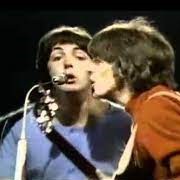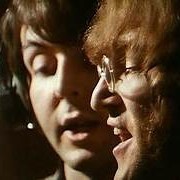John Lennon: His Thought-Provoking Lyrics
John Lennon: His Thought-Provoking Lyrics By Ruben G. Vasquez Beatles Historian The4Beatles.com John Lennon John Lennon captured the hearts of millions with his distinctive voice, captivating melodies, and insightful lyrics. As a Beatles songwriter, Lennon left an indelible mark on the music industry, composing songs that were not only catchy and memorable but also carried deep and thought-provoking messages. We will explore Lennon’s ability to create melodies that resonate with audiences while embedding profound social commentary and introspective thoughts within his lyrics. As an Amazon Affiliate, a commission may be earned from qualifying purchases. Previous Next Best John Lennon Songs Lennon’s songs were known for their infectious melodies that had an immediate and lasting impact on listeners. Tracks such as “Imagine”, “Instant Karma”, “A Day In The Life” and “All You Need Is Love” exemplify Lennon’s innate ability to craft hooks that stick in the mind, becoming instant classics. These melodies, often simple yet powerful, allowed his messages to reach a broader audience and transcend generational boundaries. Previous Next Behind The Song Lennon’s lyrics were not mere words set to a tune but served as a platform for his social and political activism. Through songs like “Working Class Hero” and “Power to the People,” Lennon fearlessly addressed the inequalities and injustices present in society, advocating for change and empowering those who felt marginalized. By intertwining his personal experiences with broader social issues, Lennon connected with listeners on a profound level, urging them to question the status quo. Previous Next Addressing Inequality and Injustice Lennon’s songs often highlighted the inequalities and injustices present in society, amplifying the voices of the marginalized and oppressed. In “Working Class Hero,” he exposed the realities faced by the working class, shedding light on their struggles and advocating for a fairer society. Lennon’s lyrics in “Woman Is the N*** of the World” boldly confronted sexism and misogyny, highlighting the systemic discrimination faced by women. By tackling these sensitive and contentious issues head-on, Lennon challenged social norms and sparked crucial conversations. Previous Next Anti-War Stance Lennon’s unwavering anti-war stance was evident in his recording of “Give Peace a Chance” and the unique seasonal tune “Happy Xmas (War Is Over).” These powerful anthems expressed his passionate opposition to war and his desire for global harmony. Lennon’s lyrics became rallying cries for peace activists around the world, resonating with a generation disillusioned by the Vietnam War and other conflicts. His music became a symbol of hope and a call to action, urging individuals to work collectively towards a more peaceful world. Lennon and Yoko Ono, staged high-profile protests and events to draw attention to various causes. One of the most notable examples was their “Bed-In for Peace” in 1969, where they spent a week in bed, inviting the media to discuss peace and activism. Lennon’s willingness to use his fame and public persona to promote social change set him apart from many other artists of his time. His activism inspired countless individuals to become more politically engaged and demonstrated that one’s influence can extend beyond the realm of entertainment. Lennon’s Best Lyrics With The Beatles Beyond his social commentary, Lennon also reached into themes of personal reflection and introspection. “Strawberry Fields Forever”, “A Day In The Life” and “In My Life” showcased Lennon’s ability to delve into his own psyche, exploring his thoughts, memories, and emotions. These introspective songs resonated with audiences who related to the universal experiences of longing, nostalgia, and self-discovery. By baring his own vulnerabilities, Lennon invited listeners to confront their own inner worlds, fostering empathy and self-reflection. Author’s Summation When the names “John Lennon” and “The Beatles” are mentioned, the world of music immediately comes alive with memories of timeless melodies and impactful lyrics. At the heart of this cultural phenomenon is John Lennon, a brilliant songwriter whose thought-provoking lyrics and profound messages have left an indelible mark on the fabric of popular music. Lennon, a pivotal member of The Beatles, alongside Paul McCartney, George Harrison, and Ringo Starr, showcased his talent as a songwriter early on. From the band’s early days in Liverpool to their global fame, Lennon’s ability to craft meaningful lyrics was evident. Songs like “In My Life”, “Strawberry Fields Forever” and “If I Fell”, credited to Lennon-McCartney and Lennon’s own, “Old Dirt Road”, “Woman” and “Jealous Guy”, captured the essence of empathy and reassurance, with simple yet powerful lyrics that continue to resonate with listeners across generations. One of John Lennon’s best-known compositions, “Imagine,” released in 1971, remains one of his most enduring creations. The opening piano riff immediately captures attention, setting the stage for the song’s lyrics to deliver a powerful commentary on envisioning a world without borders, war, or division. The song’s message of love and unity, continues to inspire listeners to imagine a better world. Lennon’s musical prowess extended beyond catchy melodies. His intricate guitar work and experimentation with instrumentation added depth to his compositions. In songs like “Across the Universe,” his use of intricate guitar melodies creates an otherworldly atmosphere that transports listeners to a realm of contemplation. The lyrics themselves, a testament to Lennon’s ability to capture complex emotions, invite us to imagine a world of profound interconnectedness. Behind the song “Beautiful Boy,” a tender piece from his solo career, lies a tribute to his son Sean. The song’s lyrics serve as a reminder of Lennon’s personal journey, revealing his role as both an artist and a father. The sincerity and warmth of his words underscore his enduring impact as a songwriter whose music touched the hearts of millions. Lennon’s thought-provoking lyrics often carried political messages and powerful commentaries. His song “Give Peace a Chance” became an anthem for anti-war movements, reflecting his desire to make a positive change in the world through his music. Furthermore, his R&B-infused track “Rock ‘n’ Roll” paid homage to his musical influences, showcasing his versatility and love for the genre. Tragically, Lennon’s life was cut short on December 8, 1980, but his musical legacy lives on. His ability to … Read more





